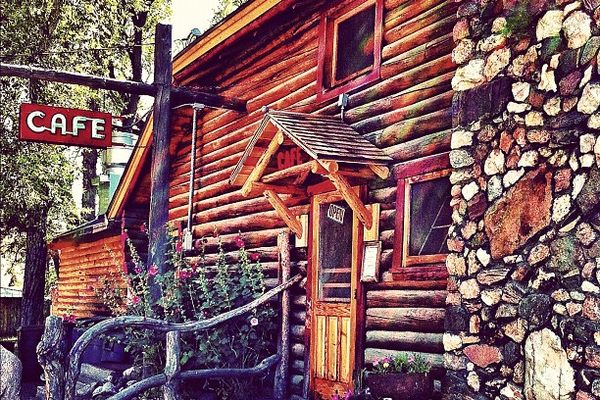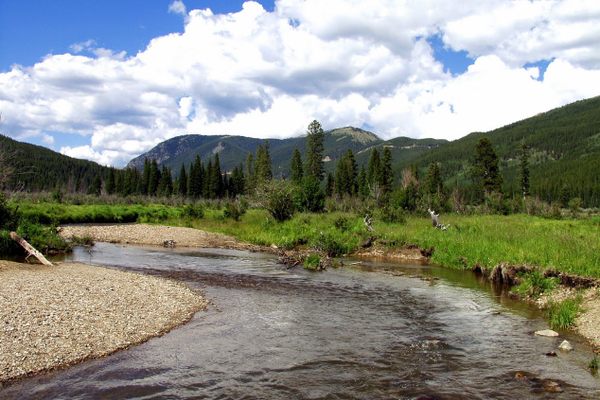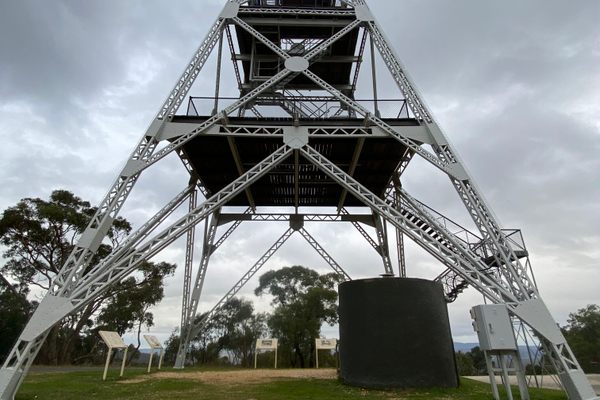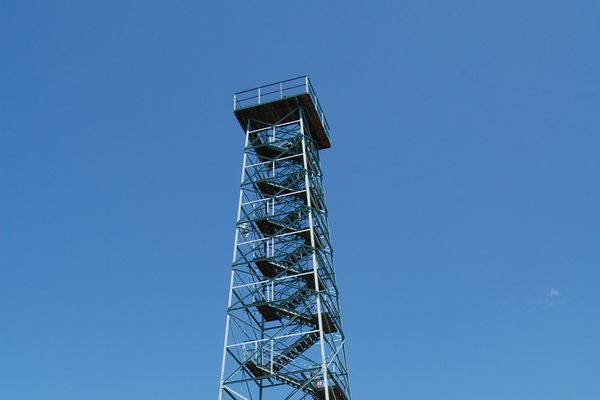Hahn’s Peak Lookout
A long and winding trail through history led to the current iteration of this mountaintop tower.
In the mid-19th century, the prospect of gold brought those hungry for riches westward. And while some did find what they were looking for, prospecting was, for many, disappointing, dangerous, and often deadly. Many died in the mines, and others from disease or malnutrition. And the cycle of death not only affected the prospectors, but the Indigenous people living in the territory. History is full of stories of sadness and loss. The history of Hahn’s Peak is one of those stories, but it’s also the story of restoration and rebuilding.
The peak, a massive 10,824 feet, was an active spot long before Hahn’s exploration. As long as 11,000 years ago, the Indigenous people of the area crafted tools from the mountain’s stones, and in the summer hunted for the elk, mule deer, and bison that roamed the area. Early miners called the mountain “Old Baldy,” but it eventually took on the name Hahn’s Peak, after the German prospector who discovered gold at its base.
The prospector, Joseph Hahn, set out on an ill-fated prospecting trip along with William Doyle and George Way in 1866. After finding the area rich with gold, with “yields running from ten dollars to fifteen dollars per shovelful,” Hahn and his team set up a mining camp. When winter came, harsh weather forced the team to split up. Doyle and Hahn stayed put, while Way went out to get supplies. He never returned, and Doyle and Hahn were both found dead in 1867.
By the early 1870s, the area had become an active mining town, with prospectors picking up where Hahn left off. In 1905, the area, including an abandoned gold mine, was converted to public land. This move established the Park Range Forest Preserve, as a means of protecting the land. Part of land protection included fire protection, and towers were built on mountain peaks across the country to serve as lookouts for early fire warnings. Between 1908 and 1912, a fire tower was built atop Hahn’s Peak.
Like the Indigenous people before them, the construction workers used the mountain’s stones as raw building material. But dangerous terrain made construction difficult. The construction supervisor assigned forest rangers who used a caravan of saddled horses to haul building supplies to the summit. “When it was first created, it was monumental to even be able to have facilities that we could identify wildfires with,” U.S. Forest Service employee Bridget Roth told a local news channel in 2014.
Lookouts slept in the tower, looking across the vast horizon for signs of fire. In the 1940s, the tower underwent construction to make it larger and add stair access. The 1940s also gave the tower a new purpose. Now instead of fire watch, it was used to watch for fighter jets during World War II. But like many other fire towers, the Hahn’s Peak tower fell into disrepair as fire watches began to be done via airplane. It was abandoned in the 1950s.
Like the man the mountain was named for, the tower became a memory, far removed from its original purpose. Years of wind, precipitation, and lightning deteriorated the building, aided by vandalism and arson. In 2013, the aging tower was stabilized, the first step in a huge overhaul. Missing pieces were replaced, concrete and plaster repaired, and the tower was declared officially saved in 2016.
Today, the lookout tower serves as the reward at the end of a four-mile hike to the summit, along with views of the surrounding forest and wilderness. Preserving the tower was a small part in preserving the area’s history, to trace the paths of those before, from a would-be prospector to those who scanned the skies for fire. “It’s not just protecting monumental things for monumental people in monumental places,” Roth said. “We’re protecting the small actions of people.”
Know Before You Go
It’s recommended to start your hike to the tower early in the morning to avoid afternoon electrical storms. Avoid the top if storm clouds move in or if you see lightning, even if it's far away.
















Follow us on Twitter to get the latest on the world's hidden wonders.
Like us on Facebook to get the latest on the world's hidden wonders.
Follow us on Twitter Like us on Facebook